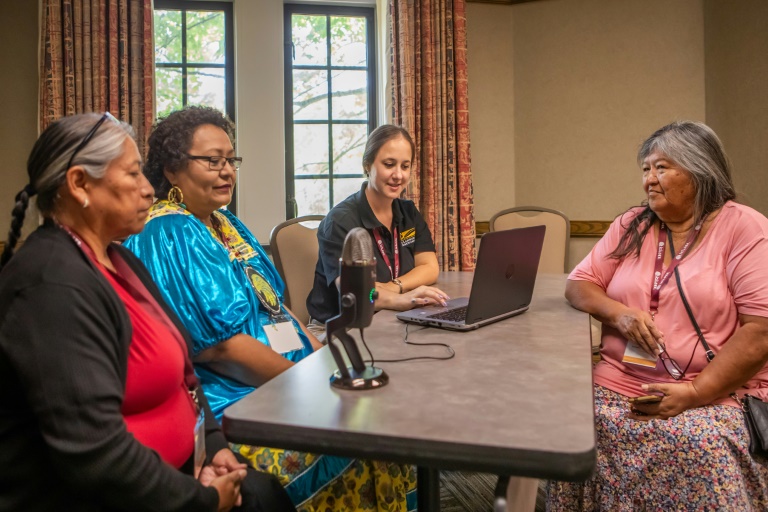Linguistic experts are utilizing advanced technology to revitalize endangered Native American languages, preserving generations of Indigenous traditions through innovative methods such as children’s literature and smartphone applications.
In a notable effort, three Native American women collaborate around a computer, meticulously recalling and documenting numerous Apache language terms associated with daily tasks like cooking and eating. Their initiative involves developing an online English-Apache dictionary, among various projects aimed at safeguarding endangered Indigenous languages in the United States.
Utilizing Rapid Word Collection (RWC) software, these women harness an algorithm to sift through Apache text and audio databases, uncovering forgotten words. These words are then defined, translated into English, and their pronunciation recorded, ensuring users of the dictionary can accurately articulate them.
Teacher Joycelene Johnson and her colleagues verify the definition of the Apache word “kapas,” translating to “potato” in English. Johnson, who instructs Apache vocabulary and grammar to a bilingual school on her reservation, highlights the significance of preserving the language for non-speakers through accessible references like a museum.
At the International Conference on Indigenous Language Documentation, Education, and Revitalization (ICILDER) held at the University of Indiana, Johnson shares insights, revealing that despite around a thousand students at the bilingual school, only one, an eleventh-grader, is fluent in Apache.
The conference, attended by representatives from approximately 40 Indigenous groups globally, focuses on strategizing ways to rescue endangered languages. UNESCO reports that of over 6,000 recognized Indigenous languages worldwide, nearly half face extinction, with about 1,500 in immediate jeopardy.
The Language Conservancy (TLC), an NGO dedicated to safeguarding roughly 50 Indigenous languages globally, created the RWC software to swiftly produce dictionaries. Working on a $3 million budget, TLC collaborates with linguists and Native American language educators to facilitate this process.
According to Wilhelm Meya, TLC’s CEO and an ICILDER organizer, the software significantly accelerates dictionary creation, enabling Indigenous communities to craft dictionaries within a year, a process that previously spanned two decades. Meya emphasizes the urgency, considering the diminishing number of native speakers and the imminent risk of language loss in the United States and Canada.
With Indigenous language speakers averaging around 75 years old, TLC aims to document these languages before they vanish permanently. Meya underscores the irreversible loss that occurs when a language disappears, taking with it an integral part of the culture.
Supporters like Jacob Chavez, a Cherokee language learner, appreciate how technology facilitates quicker documentation and prolonged preservation of cultural knowledge.
While some, like Paula Hawkins, express excitement over online dictionaries, Danielle North King, from the Chemehuevi nation, raises concerns about imposing Western writing systems on Indigenous oral languages. Meya clarifies TLC’s commitment to preserving Indigenous culture and stresses the need to navigate sensitivities surrounding cultural preservation efforts.
He acknowledges the importance of language in shaping identity, nationhood, and sovereignty, highlighting the complexities in safeguarding Indigenous languages while respecting their inherent oral traditions.
Published by Hear Her Stories

